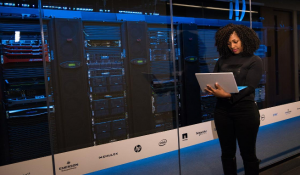Cybercrime and identity theft are on the rise, and the risk of sensitive consumer data being compromised is greater than ever. According to the University of Maryland, a cyberattack happens every 39 seconds. Companies that collect and store customer data are now being tasked to ensure that their data security methods are beyond reproach. The data protection routines that have become standard are no longer enough.
But what does that mean for your small or medium-sized business? If you own or operate a company that’s struggling to implement advanced tactics for a client who wants the highest levels of cybersecurity, it could mean a lot. The authentication methods outlined below are designed to offer that extra layer of protection.
Looming Cybersecurity Threats
All companies should be on high alert. The threat of malicious cyberattacks are constantly looming, with their impact and volume rising virtually every day.
The aggressive nature of modern cyberattacks requires more protection than a password or a PIN can provide. Customers are starting to educate themselves on the changing landscape of cyberthreats, and they’re demanding stronger protocols for the companies that store their personal information.

The solution is for you to get busy devising your own cybersecurity strategy. Most companies that depend on computer networks either have an IT specialist or an IT department. These professionals are charged with keeping the networks operational and protecting the integrity of the data housed therein.
If you’re in an industry that uses a computer-based system—and that’s all of us—you should consider employing an in-house IT specialist to make sure your system is up to date and prepared for modern cyber threats. Additionally, IT professionals themselves can help you devise a strategy to enhance your cybersecurity level.
Are Artificial Intelligence and Biometric Authentication for Real?
Yes, they are. Since passwords and PINs are no longer strong enough to thwart cyberattacks, a slew of advanced security technologies are gaining popularity. Aside from just being effective, these tools and tactics demonstrate to customers that all necessary steps have been taken to protect their sensitive data. Plus, they’re getting more affordable by the day.
Artificial intelligence is no longer a mere element of sci-fi movie plots—it has become a viable and available technology for even medium-sized companies. There are many functions that AI serves today, and cybersecurity is a major one. Alongside AI comes great leaps in biometric authentication tech, a security process that involves the measurement and verification of unique biological characteristics used as checkpoints before gaining access to any database, computer, or physical location. No, it’s not just in the movies anymore! Here is a quick breakdown of both security tools.
AI Authentication
AI authentication involves the use of automated computer systems to perform fast and effective security functions, the key method of which is called adaptive authentication. This type of authentication identifies customer behavior patterns and blocks access when any anomalies are detected.

Biometric Authentication
Installing biometrics for verifying identity is a critical added layer of protection for customer and provider security. Biometric technology involves the use of scanners to read and compare characteristics with the images saved in a database. If a match is made, the customer is able to gain access to their account. Biometric scanning can include all or some of the following:
- Facial Recognition: a matrix of 80 points is imposed over the image of the face and compared with facial images in the database
- Eye Scanning: blood vessels in the retina or unique patterns in the iris are scanned, stored, and used in everything from cell phones to computers to building access
- Fingerprint Scanning: fingerprint scanning has been a regular occurrence in Japan for some years now, and more countries should be prepared to see it used in places like airports and hotels
- Hand Scanning: hand scans are not so much about hand shape as they are about unique vein patterns in the flesh, making these scans at least as effective as fingerprints
- Voice Identification: vocal pattern and tone ID is currently used in plenty of online search engines these days—Alexa, Siri, etc.—and the same tech can easily be used to protect data
The Takeaway
Customers are becoming increasingly concerned about their personal information falling into the wrong hands. Can your business afford to be among the 77 percent of businesses that admit to not having a cybersecurity response plan?
Many hesitate to incorporate new cybersecurity strategies because they assume these methods will be costly. But think of this: the cost of recovery from even a mild cyberattack can reach tens of thousands of dollars. And who can afford that? Plus, there will be damage to your reputation. Customers who have their data compromised will likely stop doing business with you, making the whole ordeal even more costly.
Sign up for the TopRight blog! At TopRight, we love helping sales and marketing executives transform their business and retain their customers. If you feel like you could use some help, a little boost in your sales, or a quick marketing health check, then let’s have a conversation. In the meantime, feel free to connect with me on LinkedIn, follow me @toprightpartner, or if you want to go deep on transformational marketing, grab a copy of my new book, Marketing, Interrupted.